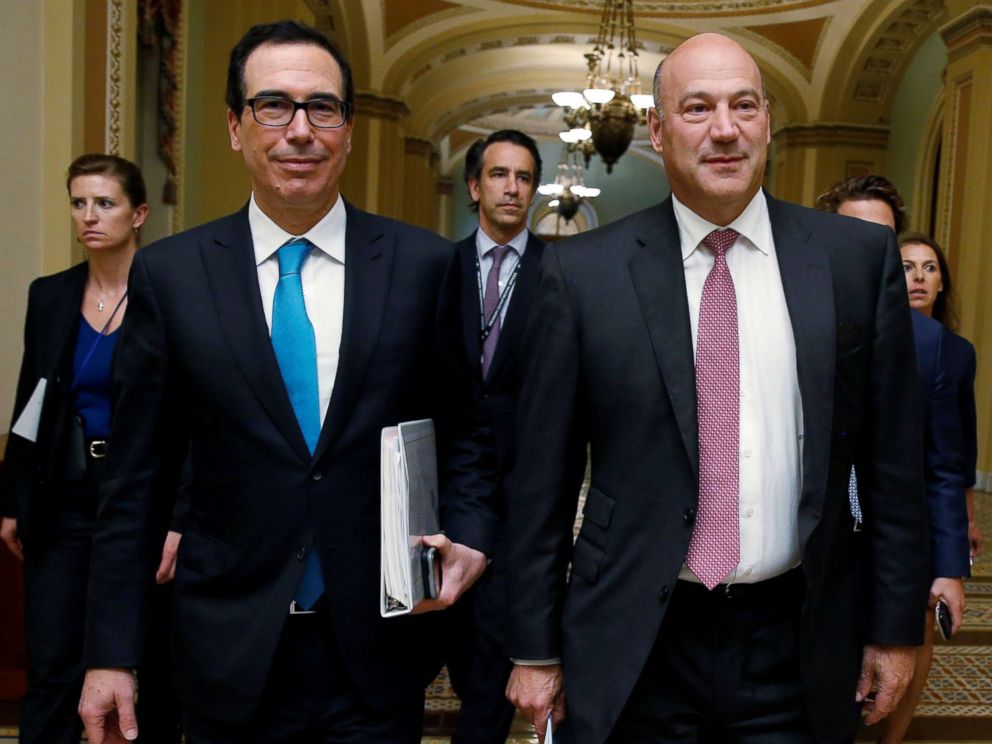What we know about the Trump tax plan
Reworking the tax code is high on the White House agenda.
— -- The White House is signaling that one of the next big items on its agenda is to rework the U.S. tax code, though it’s unclear whether the specifics have been worked out.
President Donald Trump hosted a bipartisan group of senators at the White House for dinner Tuesday and has held additional events where he talks about his pursuit of tax reform.
In spite of the subject’s increased visibility, however, details are hard to come by.
Here is what is known about the tax plan at this point.
Detailing the details
Trump has said that he wants to simplify the tax system extensively, saying any changes "should benefit loyal, hardworking Americans and their families."
"The tax code is so complicated that more than 90 percent of Americans need professional help to do their own taxes,” he said two weeks ago.
“This enormous complexity is very unfair, it disadvantages ordinary Americans who don't have an army of accountants, while benefiting deep-pocketed special interests.”
And then just today, Trump noted that wealthier Americans will not necessarily be protected from rising tax rates.
"The rich will not be gaining at all with this plan. ... I think the wealthy will be pretty much where they are. If we can do that, we'd like it. If they have to go higher, they'll go higher, frankly,” Trump said during a bipartisan meeting on taxes at the White House today. “We're looking at the middle class and we're looking at jobs."
Sen. Pat Toomey, R-Pa., was among the senators who attended the Tuesday White House dinner before later speaking to reporters.
His three main points about any tax plan: that it focus on making the U.S. tax system competitive; that it focus solely on income earned in the United States rather than abroad; and that it include a real net tax cut.
"It's really important we lower rates, we get companies that aren't paying taxes to paying their fair share, and we get the top rates down to a lower and competitive rate," he said.
An earlier framework, introduced by Treasury Secretary Steve Mnuchin and Trump's chief economic adviser, Gary Cohn, centered on reducing the number of tax brackets to three from seven, lowering business taxes, eliminating tax breaks that mainly benefit wealthy individuals and encouraging the repatriation of overseas profits.
“Everybody has an agreement we are going to move this as fast as we can,” Mnuchin said during a briefing April 27 in which he and Cohn talked through the proposal with reporters.

But since then, there are indications that even those pillars of the plan may have shifted. The New York Times has reported that the original Mnuchin-Cohn proposal for a 15 percent corporate tax rate -- a number Trump has repeatedly touted -- has shifted to the 20-to-25 percent range, and that a proposed 35-percent ceiling for income tax could be scrapped altogether, keeping the current 39.6 percent rate intact.
When asked about the possible changes during an event this week, Mnuchin said he isn't sure whether they would be able to reach the 15 percent figure that Trump has promoted, and Mnuchin wouldn't specify what he views as a more likely solution.
"I don't know if we'll be able to achieve that [15 percent rate], given the budget issues but we're going to get this down to a very competitive level," Mnuchin said Tuesday.
Talking timing
Toomey said it will take a few months to pull everything together.
"The goal is, by Christmas, to have a tax reform bill on the president’s desk and I still believe that that's doable," Toomey said on the call with reporters.
Toomey also said Mnuchin and Cohn met with the Senate Budget Committee Tuesday to talk specifics.
"A lot of work has been done,” he said. “A tremendous amount of work has been done in fleshing out the details. It's not all finalized, obviously; a lot needs to be done.
"But we'll have to await a formal unveiling, which I think will happen soon.”
Sen. John Thune, R-S.D., reiterated the vague timeframe this morning on MSNBC's "Morning Joe."
The blueprint is expected to be out "in a couple weeks," he said, adding that the president stressed that the plan would be helpful for middle-income tax payers.
"They're working on it right now,” he said of the White House. “They’re getting close. That they’re going to have their own ideas to put in the mix.”
Pressuring Congress
While Trump was clearly turning on the charm by inviting a bipartisan group of senators to the White House for dinner this week to talk about taxes, he also wasn’t above applying public pressure.
During an Aug. 30 speech in Missouri, Trump said, "I don't want to be disappointed by Congress."
"I think Congress is going to make a comeback. I hope so, the United States is counting on it," he said at the time.
And then this morning he tied the push for tax reform with the relief efforts for the recent hurricanes.
"With Irma and Harvey devastation, Tax Cuts and Tax Reform is needed more than ever before. Go Congress, go!" he wrote.
Selling the plan
Trump isn't just calling on Congress to act in this case. He is also apparently planning to stump extensively for the plan on his own.
He may travel to as many as 13 states to make the proverbial sales pitch for the issue, a White House official told ABC News.
He has already traveled to Missouri and North Dakota for recent events to talk about taxes, and the other states that are expected to be on his travel log in the coming weeks include Florida, Indiana, Michigan, Montana, Ohio and Pennsylvania.
ABC News' Jordyn Phelps and Mariam Khan contributed to his report.




